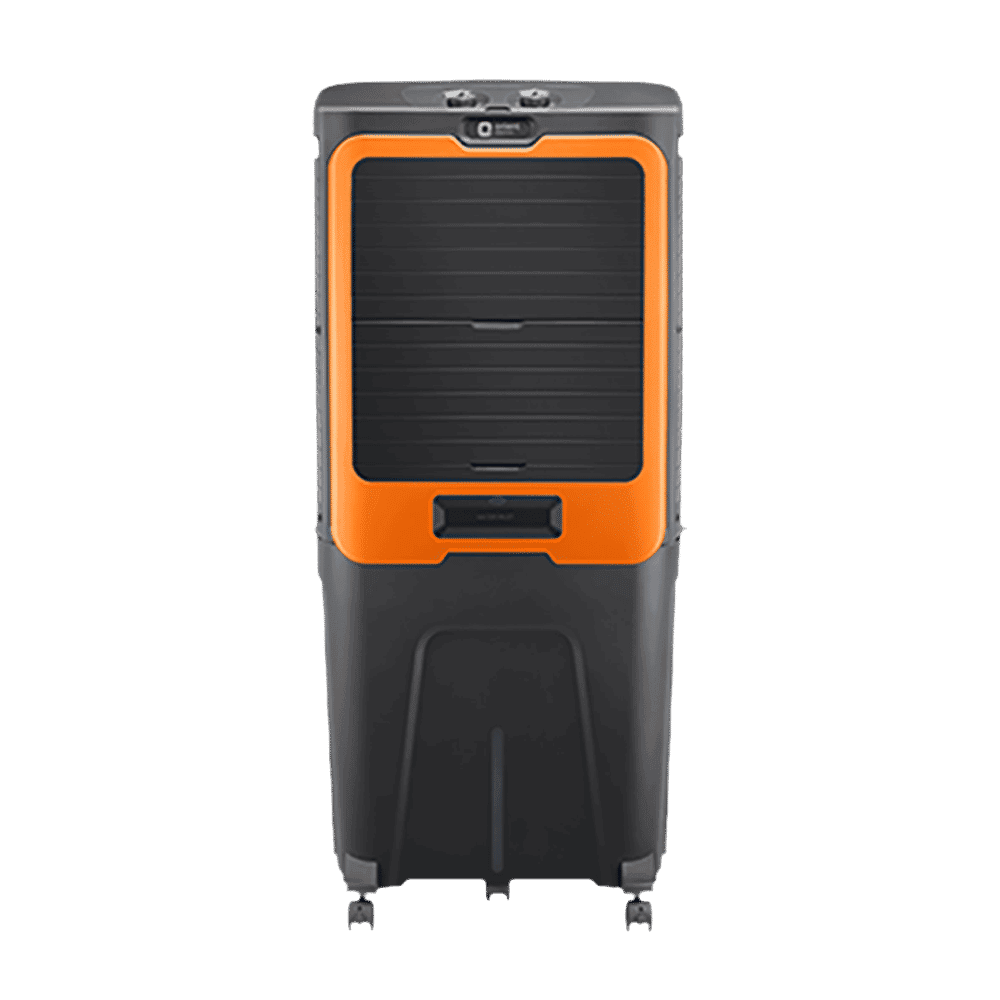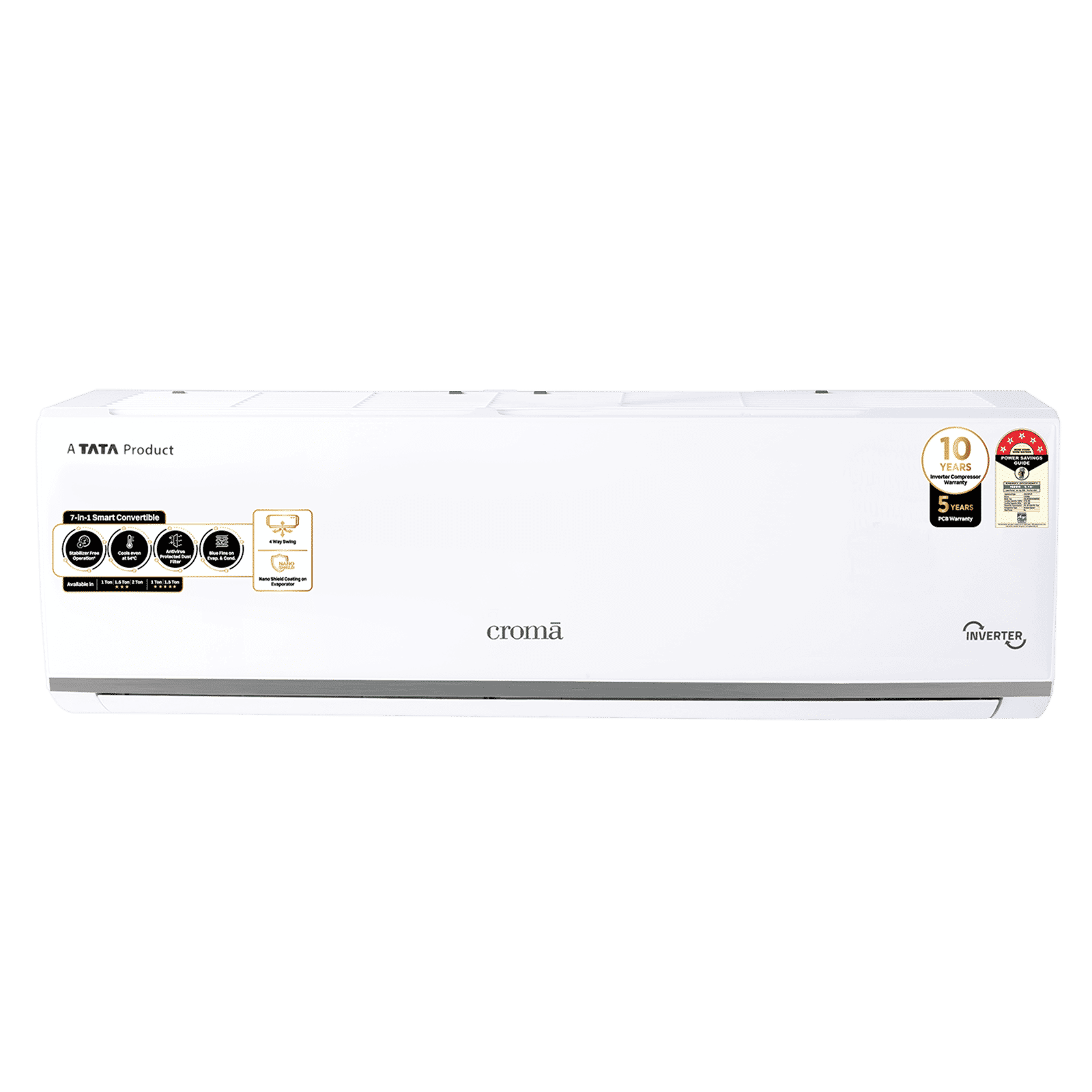
Home Appliances
•06 min read

Buy Orient Ultimo 88 Litres Desert Air Cooler with Aerofan Technology (Ice Chamber, Dark Grey) online at best prices from Croma. Check product details, reviews & more. Shop now!
Imagine stepping into your home on a scorching summer day, and the cool, refreshing air instantly envelops you. This comfort is thanks to the marvel of air conditioning. But have you ever wondered how air conditioner cools the room? Understanding the AC cooling mechanism can help you make informed decisions when purchasing or maintaining your unit.
Air conditioning is a process that involves removing heat and moisture from the interior of an occupied space to improve comfort. The concept dates back to ancient Egypt, where reeds were hung in windows and moistened with water to cool the air. Modern air conditioning systems have evolved significantly, becoming more efficient and accessible. Today, air conditioning is not just a luxury but a necessity in many parts of the world, especially in urban areas where temperatures can soar.
The cooling process in air conditioners is based on the principles of thermodynamics, specifically the heat transfer process. Refrigerants play a crucial role in this process. These substances absorb heat from the indoor air and release it outside, thus cooling the room. The efficiency of this process has been enhanced over the years with advancements in technology, making modern air conditioners more energy-efficient and environmentally friendly.
An air conditioner comprises several key components, each playing a vital role in the cooling process:
Compressor: The heart of the system, it compresses the refrigerant, raising its temperature and pressure.
Condenser: Located outside, it releases the absorbed heat from the refrigerant into the outdoor air.
Evaporator: Inside the room, it absorbs heat from the indoor air, cooling it down.
Expansion Valve: It regulates the flow of refrigerant into the evaporator, ensuring efficient cooling.
Here’s a step-by-step breakdown of the air conditioning process:
Heat Absorption: The evaporator coil inside the room absorbs heat from the indoor air.
Compression: The compressor increases the refrigerant's temperature and pressure.
Heat Release: The condenser coil outside releases the absorbed heat into the outdoor air.
Cooling: The refrigerant cools down and returns to the evaporator to repeat the cycle.
There are various types of air conditioning systems, each with its pros and cons:
Window Units: Compact and easy to install, ideal for small rooms.
Split Systems: Consist of an indoor and outdoor unit, offering better cooling efficiency.
Central Air Conditioning: Suitable for cooling entire homes, providing uniform temperature control.
Portable Air Conditioners: These units can be moved from room to room, providing flexibility and convenience.

Buy Blue Star YNUS 5 in 1 Convertible 1.5 Ton 5 Star Inverter Split Smart AC with Dust Filter (2023 Model, Copper Condenser, IC518YNUS) online at best prices from Croma. Check product details, reviews & more. Shop now!
To ensure your air conditioner operates efficiently, follow these tips:
Regularly maintain and clean the unit.
Ensure proper installation and insulation.
Check for any leaks in the ductwork and seal them promptly.
Use ceiling fans to help circulate the cool air more effectively.
Save energy and reduce costs with these techniques:
Use programmable thermostats to control temperature settings.
Keep doors and windows closed to prevent cool air from escaping.
Install energy-efficient windows and insulation to reduce heat gain.
Consider using shades or curtains to block out direct sunlight during peak hours.
When selecting an air conditioner, consider the following factors:
Room size and layout.
Budget and energy efficiency ratings.
The specific cooling needs of your household.
Long-term maintenance and service options available.
Purchasing from Tata Neu and Croma ensures you get reliable products, expert advice, and after-sales support. Enjoy exclusive benefits like cashback offers, NeuCoins rewards, and express delivery. With Tata Neu, you can also avail of special EMI plans and additional discounts using the Tata Neu HDFC Bank credit card.
Here are some interesting facts about air conditioning:
Air conditioning has significantly improved productivity in workplaces.
Modern AC units are much more energy-efficient than older models.
Regular maintenance can extend the lifespan of your air conditioner.
Air conditioning has played a crucial role in the development of modern architecture, allowing for the creation of skyscrapers and other large buildings.
Maximize your AC’s efficiency and lifespan with these expert tips:
Keep the filters clean and replace them regularly.
Ensure the outdoor unit is shaded but not obstructed.
Schedule annual maintenance checks with professional technicians.
Consider investing in a smart thermostat to optimize cooling schedules.

Buy Croma 7 in 1 Convertible 1.5 Ton 5 Star Inverter Split AC with Temperature Sensor (2025 Model, Copper Condenser, CRLA018INF283280) online at best prices from Croma. Check product details, reviews & more. Shop now!
An air conditioner works by absorbing heat from the indoor air through the evaporator coil, compressing the refrigerant to increase its temperature, releasing the heat outside via the condenser coil, and then cooling the refrigerant to repeat the cycle.
The main components are the compressor, condenser, evaporator, and expansion valve. Each plays a crucial role in the cooling process.
Maintain and clean your unit regularly, ensure proper installation and insulation, use programmable thermostats, and keep doors and windows closed while the AC is running.
The best type depends on your room size, budget, and cooling needs. Window units are great for small rooms, split systems offer better efficiency, and central air conditioning is ideal for whole-house cooling.
It’s recommended to service your air conditioner at least once a year to ensure optimal performance and longevity.
Consider the room size, energy efficiency ratings, budget, and the reputation of the brand. Look for units with advanced features like smart controls and energy-saving modes.
Understanding how air conditioner cools the room helps you make informed decisions about purchasing and maintaining your unit. Remember to choose the right AC type, follow energy-saving techniques, and rely on trusted brands like Tata Neu and Croma for quality products and excellent after-sales support.
Regularly maintain and clean your air conditioner.
Choose the right AC type and size for your room.
Utilize energy-saving techniques to enhance efficiency.
Rely on trusted brands like Tata Neu and Croma for quality products and excellent after-sales support.
Take advantage of exclusive offers and rewards like NeuCoins for added value.